or start from open source methods. Learn more about OneLab softwareUse OneLab
Pyrochrome® Endotoxin Detection Assay
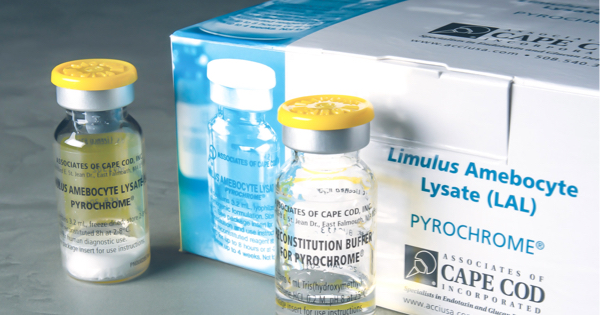
This advanced method offers an end-to-end solution developed around an advanced application, a specialized kit, or an analytical system. It delivers complete functional, ready-to-use protocols that are qualitatively and quantitatively assessed for consistency, executability, and repeatability, usually without needing to make any changes. It operates per batch size and is scalable to accommodate changing requirements.
Overview
Use of the Andrew+ Robot and OneLab to Automate Liquid Handling for Bacterial Endotoxin Testing
Pyrochrome® is a Bacterial Endotoxin Test (BET) (1) used for the detection of endotoxin. The assay utilizes a complex series of enzymatic reactions to quantify endotoxin. This series of enzymatic reactions is sometimes referred to as the Limulus amebocyte lysate (LAL) cascade (2,3). Under standard conditions, this assay is extremely sensitive and can detect minute quantities of E. coli endotoxin down 2 to 0.005EU/mL (EU: endotoxin units per millilitre) range (i.e., sub nanogram (10-9 g/mL)(2). Endotoxins, also known as lipopolysaccharides, are amphipathic molecules that are derived from the cell surface of gram-negative bacteria such as E. coli (Figure 1) (5,6). These molecules belong to a group of substances called pyrogens because they have been observed to cause a rise in body temperature. Avoidance of an unintended immune response resulting from the presence of endotoxins necessitates testing. Anyinjectabledrugormedical device is assayed for endotoxins to ensure safety. For example, any vaccine or biologic must be tested for the presence of endotoxin in the final formulation.
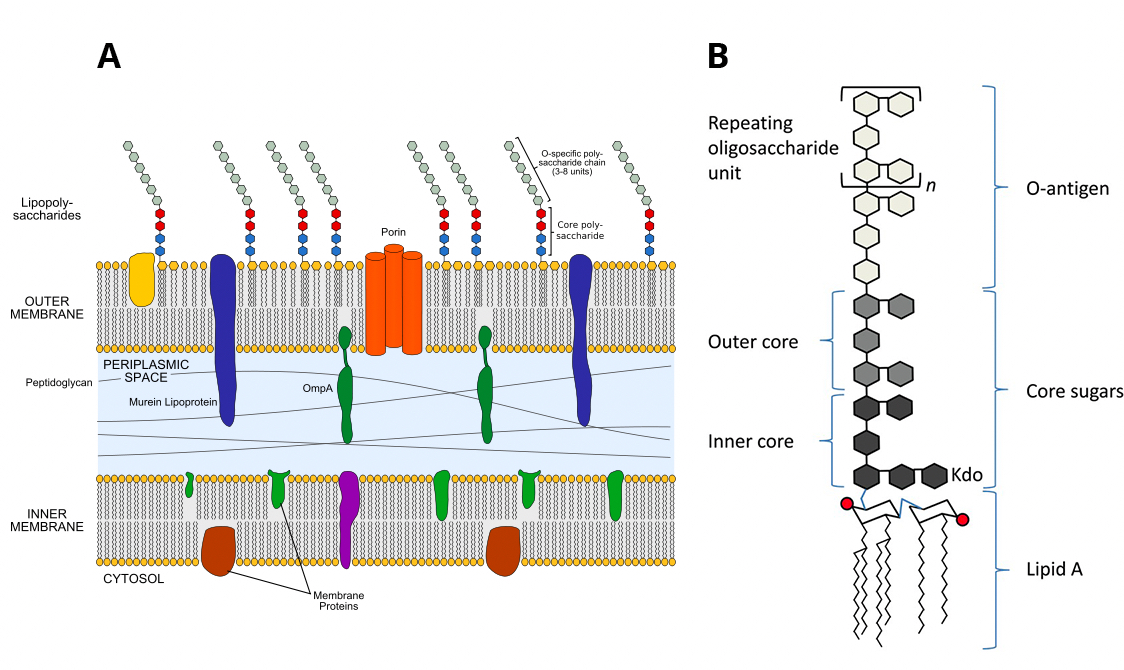
Figure 1: Endotoxin is a major constituent of the outer membrane of gram-negative bacteria. A) Gram-negative cell envelope © Jeff Dahl, CC BY-SA 4.0 via Wikimedia Commons (5). B) Endotoxin structural schematic, CC BY 3.0 (6).
As indicated above, the Pyrochrome® assay makes use of the natural biosensing capability of protein zymogens in the hemolymph of the horseshoe crab Limulus Polyphemus. Extracts from this biological material formulated in an assay mixture with a chromogenic peptide provide the main constituents of the endotoxin detection assay. The assay is commonly run in a 96-well microplate assay format and kinetic results are observed using a spectrophotometric plate reader with a detection wavelength of 405 nm. Conducting the assay is an involved process necessitating standard curve preparation, positive product control (PPC) preparation, sample arraying, and reagent dispensing all of which are time-consuming and tedious. Automation of the liquid handling steps used in standard curve, PPC and sample preparation along with sample placement on the plate increases the efficiency and consistency of these assays while reducing the ergonomic burden on analysts. The Andrew+ Robotic System reduces the analyst-required liquid handling and pipetting steps by over 85% per plate. Many analysts run several plates per day with each assay requiring approximately 150 individual pipetting steps. The OneLab protocol provided below represents a basic procedure for the execution of the Pyrochrome® assay using one of the most common configurations. Example standard curve, sample, PPC and recovery data using this protocol are presented in Figures 2 and 3 below.
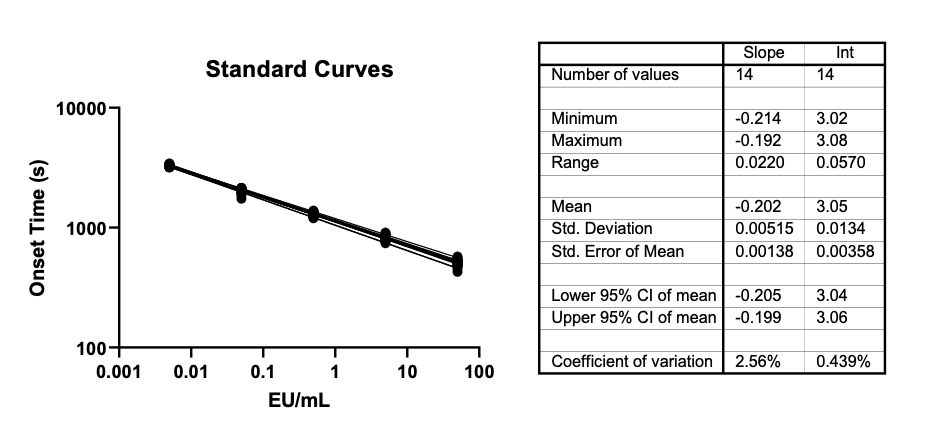
Figure 2: Example Standard Curves for Pyrochrome® executed by Andrew+ using this OneLab protocol.
This set of data (fourteen runs) is from four days using the same lots of reagents and reference standard endotoxin. The standard curve for each plate was constructed and dispensed from a unique set of dilutions. These linear fits are log-log plots from each plate. The standards for these curves are 50, 5, 0.5, 0.05 and 0.005 EU/mL. The associated plot has all onset time replicates for each of the fourteen lines plotted (there are a total of 42 points per x-axis value).
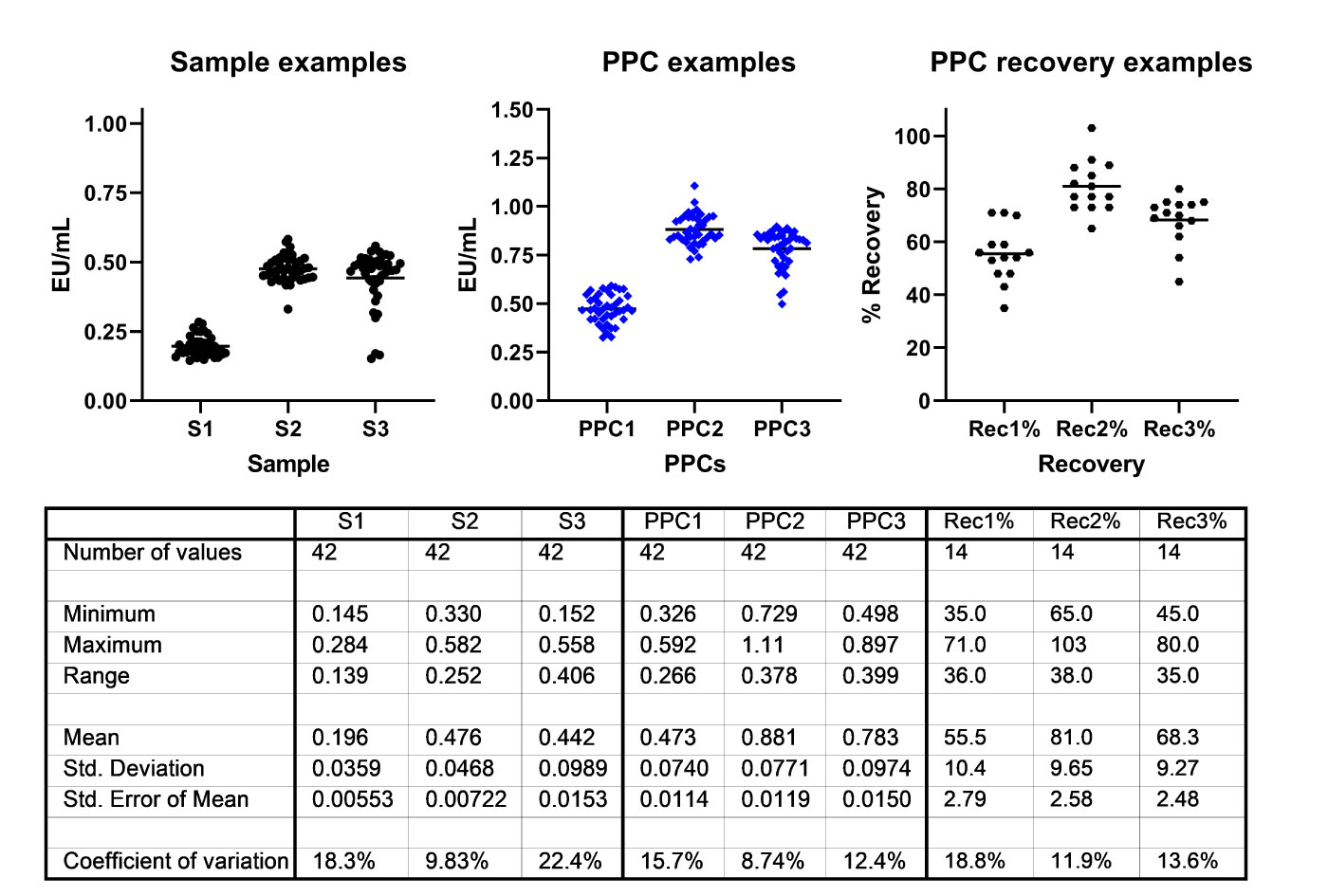
Figure 3: Example Sample PPC and Recovery results for Pyrochrome® executed by Andrew+ using this OneLab protocol. Forty-two data points were collected over 14 plates for each Sample and PPC.
They were tested on the same plates as in Figure 1 and the EU/mL results were derived from the associated standard curve. PPCs were made by spiking each sample with the 5.0 EU/ml standard, 30 μL, added to 270 μL of sample to result in an expected 0.5 EU/mL outcome for the PPC if the original sample had no endotoxin signal and no interference or enhancement. PPC recoveries used average values (14). The recoveries suggest that these samples exhibit some form of interference. See reference 2 for more information on PPCs and recoveries. The line in the scatter plot is the mean for the set.
Assay notes
LAL endotoxin assay execution note:
The Pyrochrome® assay can detect minute quantities of endotoxin down to the ~0.005EU/mL (EU: endotoxin units) range (i.e., sub nanogram (10-9 g/mL). As indicated in the instructions for use (IFU) all materials used for assay execution must be tested for potential interferences. Excellent lab technique and a clean environment are required to execute these assays. To address these requirements, it is suggested that all manipulations be carried out in a laminar flow hood or static enclosure.
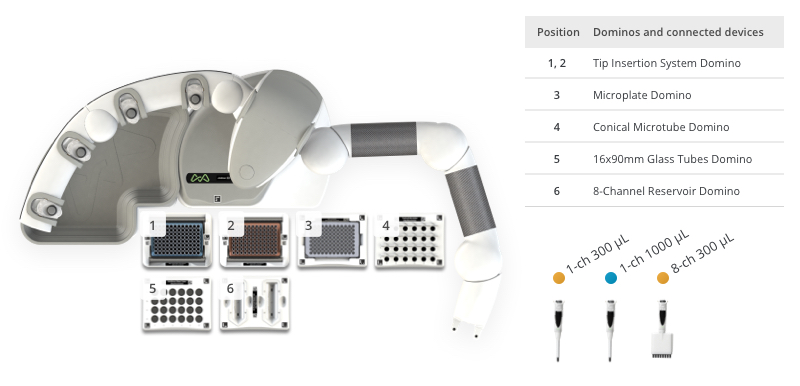
Figure 4: Andrew+ OneLab Deck setup for the Pyrochrome® Assay. Samples and reagent locations on Andrew+ deck: [1-2] Tips, [3] 96-well microplate, [4] Samples, Standards, PPCs (Positive Product Controls), 1.5 mL conical tubes, [5] LRW, 15 mL centrifuge or 16x90mm glass tubes, [6] Pyrochrome, 10 mL reservoirs. Note: LRW is LAL reagent water.
Ordering information
Andrew+ System Components: Dominos, Devices, Electronic Pipettes & Tips
- Andrew+ Pipetting Robot
- OneLab software
- Microtube Domino | p/n 186009601
- Microplate Domino | p/n 186009600
- 16×90mm Glass Tube Domino | p/n 186010159
- 8-Channel Pipette Reservoir Domino | p/n 186009613
- 2x Tip Insertion System Domino | p/n 186009612
- Andrew Alliance Bluetooth Electronic Pipette, 1-ch 300 μL | p/n 186009606
- Andrew Alliance Bluetooth Electronic Pipette, 1-ch 1000 μL | p/n 186009766
- Andrew Alliance Bluetooth Electronic Pipette, 8-ch 300 μL | p/n 186009607
Additional suggested items
- Andrew Alliance Bluetooth Electronic Pipette, 8-ch 1200 μL | p/n 186009615
- Andrew Alliance Bluetooth Electronic Pipette, 1-ch 5 mL | p/n 186009608
- Tip Insertion System Domino | p/n 186009612
- 15mL Conical Centrifuge Tube Domino | p/n 186010087
- 5mL Round Bottom Tube Domino | p/n 186010089
Recommended Consumables
- ACC, Pyroclear® Pyroplate® 96-well microplate | p/n CA961-50
- INTEGRA 10 mL multichannel reservoir | p/n 4332
- Eppendorf 1.5 mL Safe-Lock tube | p/n 0030120086
- ACC, Pyrotube® 16x90mm depyrogenated glass tube | p/n TB16C
References
- Bacterial Endotoxins Test, United States Pharmacopoeia <85>.
- Pyrochrome® Instructions for use https://www.acciusa.com/tools-and-resources/package-insert-sheets
- Lindsay, G. K., P. F. Roslansky, and T. Novitsky. 1989. Single-Step, Chromogenic Limulus Amebocyte Lysate Assay for Endotoxin J. Clinic. Microbiol. 27:947-951.
- Prior, R.B., 1990. The Limulus amoebocyte lysate test. In Clinical Applications of the Limulus Amoebocyte Lysate Test (p. 27). CRC Press Boca Raton, FL.
- Needham and Trent Nat .Rev. Micro., 2013, Fortifying the barrier: the impact of lipid A remodeling on bacterial pathogenesis, 11:467–4812.
- Anspach, J. Biochem. Biophys. Methods, 2001, Endotoxin removal by affinity sorbents 49, 665-681.
Learn more about Pyrochrome® assay from Associates of Cape Cod, Inc. (ACC)
Protocols
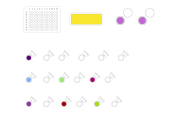
Contact info

 This is an open access protocol distributed under the terms of the Creative Commons Attribution License, which permits unrestricted use, distribution, and reproduction in any medium, provided the original author and source are credited.
This is an open access protocol distributed under the terms of the Creative Commons Attribution License, which permits unrestricted use, distribution, and reproduction in any medium, provided the original author and source are credited. 